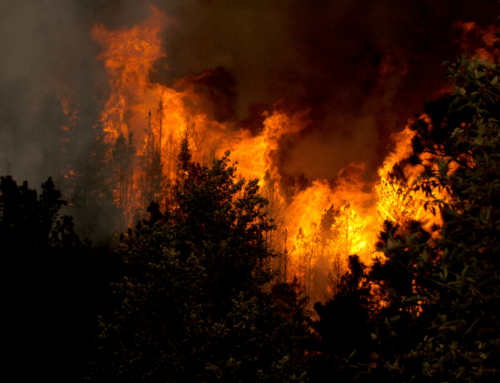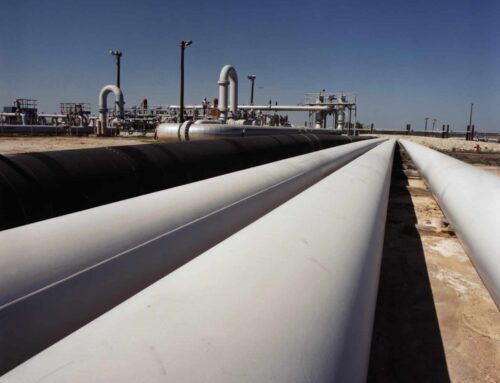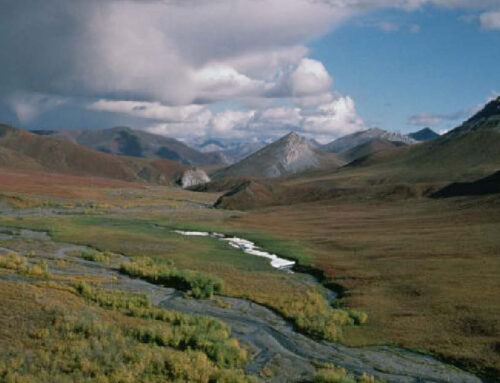On Tuesday, April 27th the Senate Energy and Natural Resources Committee held a hearing to discuss the onshore federal oil and gas program. Much of the hearing discussion focused on the Department of the Interior’s review of the program and current pause on new leasing.
Witnesses for the oil and gas industry and their Senate supporters played down the need for change and lamented the administration’s decision to delay any new leasing until they finish their review. Others witnesses, including an administration official and a tribal leader testified to the oil and gas program’s need for improvement, noting its failure to ensure cleanup of abandoned wells, limit methane emissions, and address tribal concerns.
The Leasing Pause
In January, President Biden issued Executive Order 14008 that among things, paused new federal oil and gas leasing while the Department of the Interior (DOI) completes a review of the program. In the same week, the Acting Secretary of DOI issued a Secretarial Order limiting which officials had authority to approve paperwork for existing leases, including drilling permits and rights-of-way, for 60 days. In the hearing, several senators expressed confusion and concern about what these orders did and their effect on production on federal lands and revenue from that production.
Nada Culver, the Deputy Director of Policy and Programs for the Bureau of Land Management (BLM) that runs the onshore oil and gas program, provided some clarity. While the review is ongoing, the BLM is not holding auctions for companies to get new leases to develop oil and gas on federal lands, but that does not affect continued development and production from existing leases. At the end of September 2020, roughly half of all federal acres leased for oil and gas production – 13.9 million – were sitting idle and had not been developed.
The ability of oil and gas companies to start production on these acres and drill new wells on producing leases has not been affected by the leasing pause. Deputy Director Culver noted that companies are sitting on 7,900 permits for drilling new wells that have already been approved, and the BLM is continuing to consider 5,600 other Applications for Permits to Drill (APDs).
Because the leasing pause does not inhibit production, and the bulk of receipts from federal oil and gas come from royalties on production (96% in 2020), the BLM does not foresee any impact on revenue in the near-term from the pause, including the half of revenue that is shared with states. Deputy Director Culver, however, did not provide an estimate of when the ongoing DOI review would be completed or when lease sales would resume. This led to grave predictions about the effects of the ongoing pause as well as any changes DOI might make to the federal oil and gas program after completing its review, despite a lack of evidence. Vicki Hollub, the President and CEO of Occidental Petroleum, said it was important to keep the flow of leases in the development process moving, but noted it often takes 3-4 years between lease sale and the start of production, meaning that the current pause may not have production effects for years.
Tribal Consultation
Several senators did get past the leasing pause and inquired about aspects of the onshore oil and gas program that prompted the pause and review. Senator Martin Heinrich (D-NV), for example, raised the issue of the program’s consultation with native peoples when managing operations near tribal lands. Brian Vallo, Governor of the Pueblo of Acoma located in northwest New Mexico, testified that BLM often approves oil and gas operations on sacred and culturally significant sites outside tribal lands without consulting tribes and considering the impact those operations have on sites crucial to cultural identity. He also identified how the BLM could do better to get projects near or on tribal lands approved with early and often consultation with tribes.
Methane Emissions, Abandoned Wells, and Bonding
Senators John Hickenlooper (D-CO), Angus King (I-ME), and Mark Kelly (D-AZ) all raised the importance of reducing methane emissions from oil and gas operations on federal land. The BLM issued a rule to limit methane emissions from these operations during the Obama Administration, but then issued a new rule repealing the 2016 rule in 2018. Both the 2016 rule and 2018 rule have since been struck down by federal courts, leaving in place rules drafted in 1979 that failed to prevent the rampant waste of natural gas over the last few decades.
When asked about the methane issue, Hollub of Occidental noted several voluntary programs companies can join to reduce methane emissions from their operations, but also came out strongly in favor of “direct regulation of methane.” Such regulation would ensure that companies across the industry reduce gas emissions, so that companies committed to employing best practices for leak detection and repair and limiting venting and flaring are not penalized for being more scrupulous.
Some of the methane emissions from federal lands come from oil and gas wells that have been abandoned by operators. Kathleen Sgamma of the Western Energy Alliance, an industry association, testified that current regulatory regimes were sufficient to prevent companies from abandoning more wells. Senator Maria Cantwell (D-WA) pushed back noting that industry’s cleanup assurances are often inadequate.
Deputy Director Culver added that when oil and gas companies go bankrupt, federal claims on company assets for well reclamation funds are often not given precedence. This leaves the BLM only with the bond a company provided before drilling to clean up abandoned wells. As the Government Accountability Office found, the bonds held by the BLM are insufficient to cover the low-end cost estimate for cleaning up 99.5 percent of the wells to which they are tied. Deputy Director Culver said the issue of insufficient bonding was being examined as part of the program review.
Leasing Process, Practice, and Terms
During the hearing, the panel debated the scope and efficiency of the oil and gas company’s leaseholdings on federal land. Ranking Member John Barrasso (R-WY) insisted that companies are not stockpiling land. When asked, Hollub said she did not see why companies would continue paying annual rent if they were not intending to develop federal leases. But that annual rent is so low, there’s little incentive to give up federal leases instead of holding onto them through their 10-year term. Lessees pay just $1.50 per acre for the lease’s first five years and $2 per acre for years 6-10 if oil and gas production doesn’t commence. These rental rates were set in 1987, have not been updated since, and cost taxpayers millions of dollars in lost revenue every year.
Senator Catherine Cortez-Masto (D-NV) contended that allowing companies to tie up federal land with an oil and gas lease makes little sense particularly where production is unlikely, on “low-potential” lands. In her home state, the problem is acute. Of the 22,000 leases authorized in Nevada between 1953 and 2018, just 69 ever entered into production.
Other aspects of the onshore oil and gas program also enable companies to lock up federal land for cheap, including the ability to get leases noncompetitively. Committee Chairman Joe Manchin (D-WV), pointed out that noncompetitive leasing deprives taxpayers of the bid revenue the BLM collects for parcels leased through auction for no apparent reason. He also noted that the loophole is specific to the federal oil and gas program: “…we don’t do that with the coal properties, why is it done with gas and oil, and why do we continue that?”
Deputy Director Culver noted it’s up to Congress to change the law that requires BLM to make leases available noncompetitively after they fail to get a bid at auction. She added that noncompetitive leases also are much less likely to ever enter production and, on average, generate significantly less revenue for taxpayers than competitive leases.
Lastly, there was some discussion about the royalty rate for onshore federal oil and gas leases. At 12.5%, the rate that was set back in 1920 significantly lags the rates charged on oil and gas production from state lands and offshore federal waters. Senator King asked Hollub whether it should be raised to incorporate a price on carbon. Hollub answered by saying that instead of a price on carbon, Congress should expand subsidies for carbon capture through the 45Q tax credit. Of course, her company Occidental Petroleum would be poised to benefit from expanded subsidies as it pursues the construction of a new carbon capture plant. The price on carbon aside, Sen. Daines (R-MT) cut to the heart of the matter by claiming that raising the rate would increase federal revenues but reduce production. The report he cited, however, reviewed findings indicating that raising the royalty rate to 18.75% would produce only a “negligible” effect on production.
Conclusion
Overall, the hearing identified several areas where the onshore federal oil and gas program can improve to better protect taxpayers and other stakeholders. Increasing the onshore royalty rate, rent, and bonding rates, limiting methane emissions, preventing oil and gas companies from locking up federal land, and increasing consultation with tribes would all help. The current pause on leasing is not having any immediate effects on revenue and will be more than justified if it allows for DOI to make changes that will better ensure taxpayers get a fair return from federal oil and gas development in the long term.











Get Social